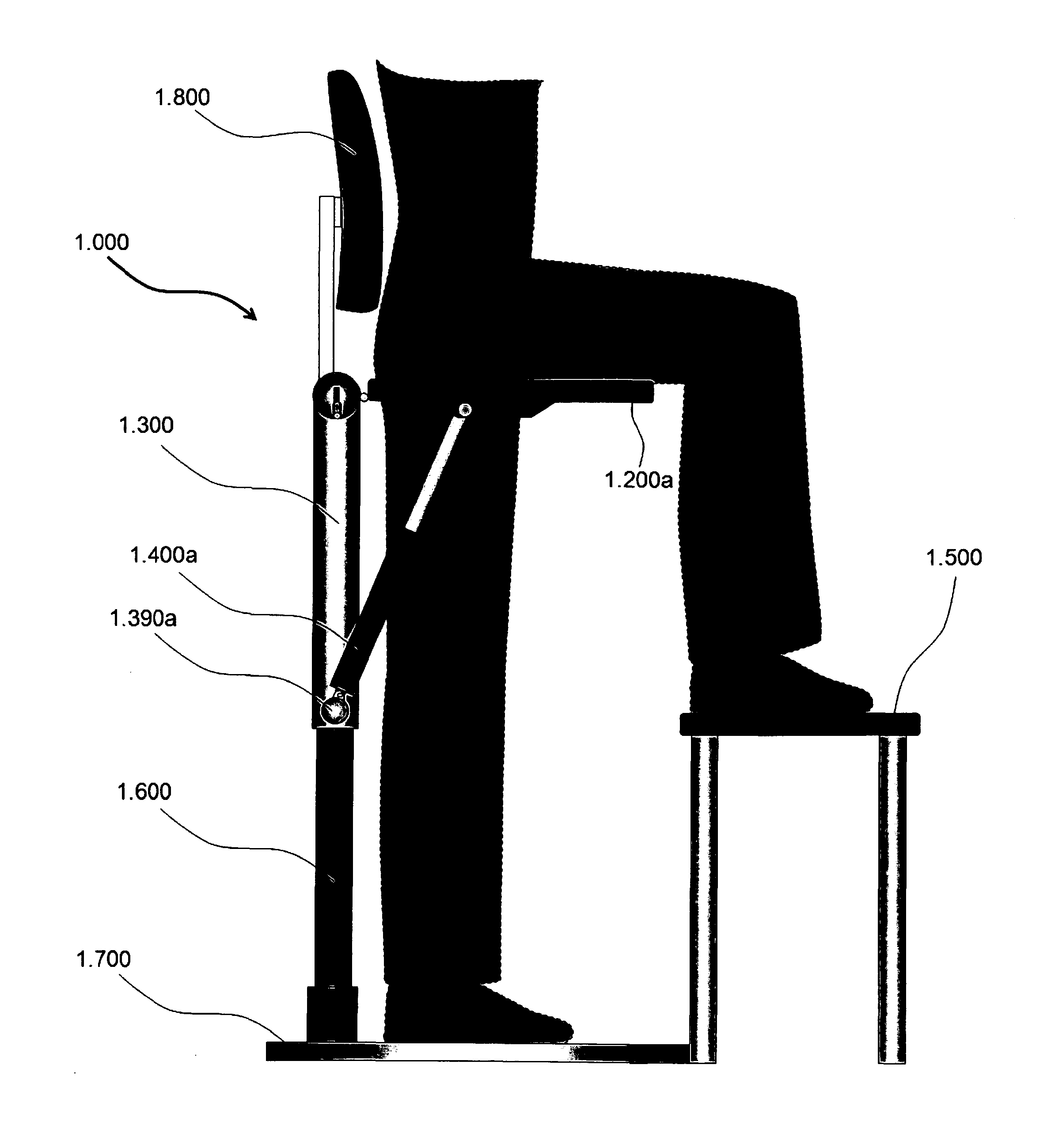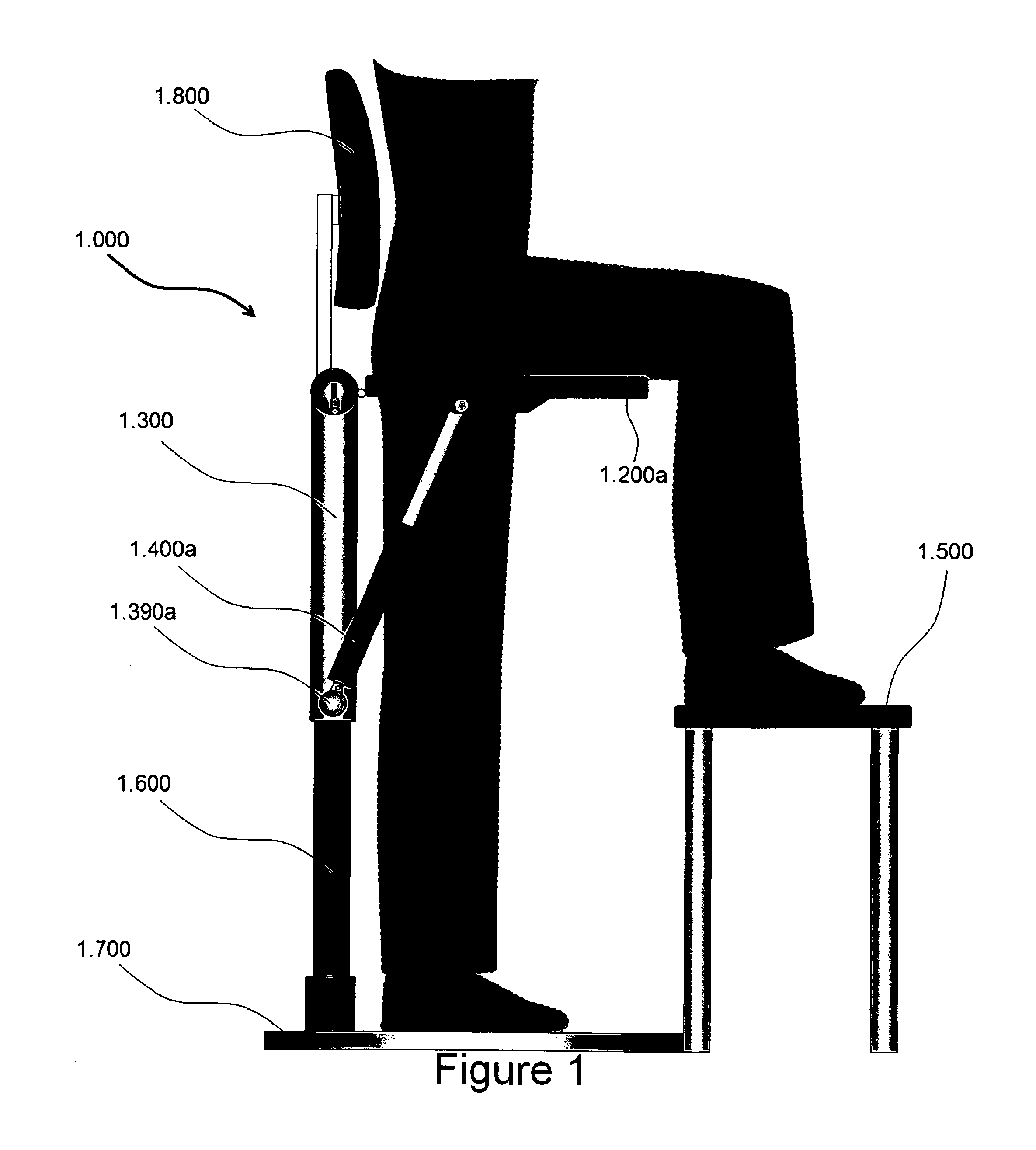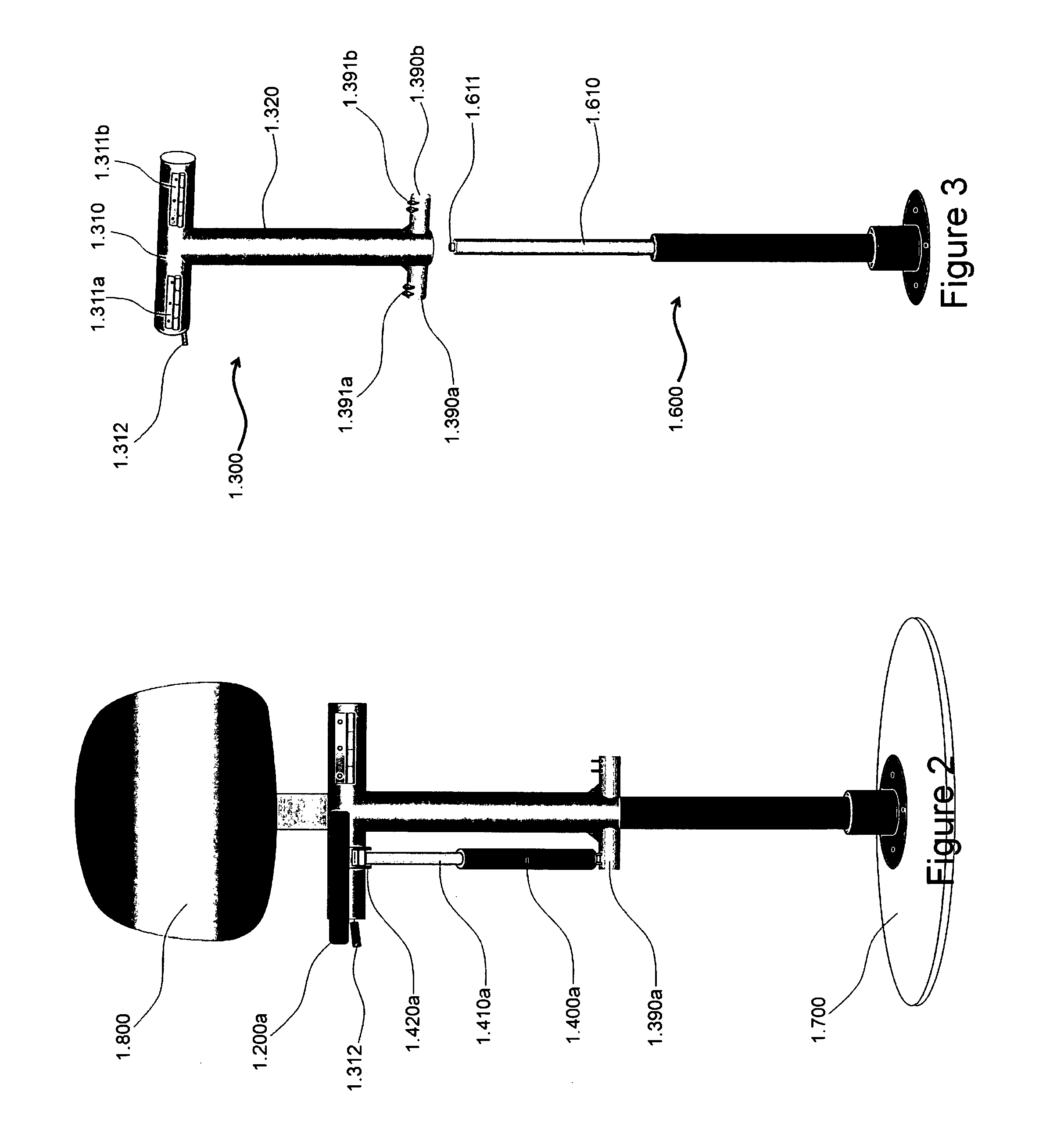Sit-stand chair
a sitting chair and stand technology, applied in the field of sitting chairs, can solve the problems of raising both upper legs and unnatural postures of users, and achieve the effect of eliminating the source of sitting-related back pain
- Summary
- Abstract
- Description
- Claims
- Application Information
AI Technical Summary
Benefits of technology
Problems solved by technology
Method used
Image
Examples
first embodiment
[0033]FIG. 1 shows a lateral view of the sitting device where a user sits on one of the half seats, 1.200a (a: right; b: left; the same convention is used throughout the text), while standing with his / her unsupported leg. For comfort, a foot stool, 1.500, is provided.
[0034]In a first embodiment and referring to FIGS. 1-9, the sitting device 1.000 includes a seat support frame or member, 1.300 to which the rear end of two half seats (1.200a for the right; 1.200b, for the left) are secured; an electric linear actuator 1.400a, is linked to a perch 1.390a jutting out from the bottom part of the support frame 1.300; the seat support frame 1.300 is supported by a pneumatic cylinder 1.600, or an equivalent mechanism, that could change the height of the sitting device via its piston 1.610 in FIG. 3 housed inside of the vertical guide tube part 1.320 of the support frame 1.300. In this preferred embodiment, the pneumatic cylinder 1.600 is a non-rotating one to prevent a pivoting motion of th...
second embodiment
[0040]FIG. 9 left panel shows a configuration of the sitting device, in which both of the half seats are in supporting position. When the height is lowered in combination with the raised half seats, the sitting device becomes an ordinary chair as illustrated in the right panel of FIG. 9.
[0041]FIGS. 10 to 14 illustrate a second preferred embodiment of the sitting device. FIG. 10 and FIG. 11 show a side view and a front view of the second preferred embodiment of the sitting device 2.000. For clarity, one half seat has been removed. Most of the mechanisms of the second embodiment of the sitting device are the same as the ones of the first embodiment except for the half seat moving mechanism. The second embodiment uses two swinging-motion seat supporting arms each one comprised of the lower part 2.400 (a right, b left) and the upper part 2.410 (a right, b left), in contrast to the linear actuator 1.400 described in the first preferred embodiment. The lower part 2.400 and the upper part ...
fourth embodiment
[0047]The half seat raising / folding mechanism can be achieved using other alternative mechanisms. One non-limiting example (fourth embodiment) is given in the upper portion of FIG. 17. This embodiment shows an unfolding motion of a half seat, 4.200a, comprising 3 small segments, rising (to the right in the figure) or retracting (to the left in the figure) segment by segment in a sweeping motion. Different number of segments, or a flexible material without segments (or a hybrid including both) can be used for a smoother motion. For a comparison purpose, a corresponding swinging motion of one monolithic half seat, 1.200a, used in the first preferred embodiment of the sitting device, is shown in the lower portion of FIG. 17. This gradual unfolding of the seat illustrated in the upper portion of FIG. 17 may achieve a less intrusive motion for the user than the one illustrated in the lower portion of FIG. 17. Only the moving components of the half seat are shown for clarity.
PUM
 Login to View More
Login to View More Abstract
Description
Claims
Application Information
 Login to View More
Login to View More - R&D
- Intellectual Property
- Life Sciences
- Materials
- Tech Scout
- Unparalleled Data Quality
- Higher Quality Content
- 60% Fewer Hallucinations
Browse by: Latest US Patents, China's latest patents, Technical Efficacy Thesaurus, Application Domain, Technology Topic, Popular Technical Reports.
© 2025 PatSnap. All rights reserved.Legal|Privacy policy|Modern Slavery Act Transparency Statement|Sitemap|About US| Contact US: help@patsnap.com



